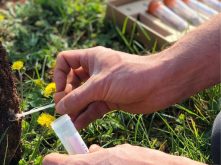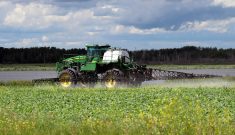Q: What tips can you offer to help me build my crop plan?
A: Winston Churchill once said, “He who fails to plan is planning to fail.” This is as true today as when Churchill first said it, and agriculture is no exception. With the 2022 growing season fast approaching, now is the time to finalize a 2022 crop plan.
Crop planning starts with deciding which crop to grow. Commodity prices are favourable for most crops right now, so it is easy to select a crop that fits a specific agronomic need like crop rotation, increasing weed control options, or a break in disease cycles. Creating a crop plan to address any of these agronomic needs starts with prioritizing your focus area and setting your expectations for the year.
Read Also

Claas brings 1000 Series SP forage harvesters to Canada
In mid-August, Claas unveiled its new line of Jaguar forage harvesters at an event in Visalia, California, deep in the heart of that state’s dairy region.
Economics is important and crop planning gives you a baseline to work from. When planning for this year’s crop, build a spreadsheet with fixed expenses and variable expenses on one side and anticipated revenue on the other. With this starting point, a grower can plan for profit. Knowing the expected return from each crop allows for better decision-making with respect to which crop inputs fit best.
An effective crop plan should include every crop input — seed, fertilizer, seed treatments, herbicides, fungicides and even insecticides. Crop inputs can be tailored for each field by working with an agronomist to select products that address agronomic needs. In agriculture, planning for everything now instead of wishing after the fact will help secure the needed inputs. Eleanor Roosevelt said, “It takes as much energy to wish as it does to plan.”
This year, more than previous years, having crop inputs purchased or secured with a booking well ahead of the growing season is important as we continue to face supply chain challenges.
While developing a crop plan now is important, understand that your crop plan needs to be flexible and should be adjusted to fit conditions as the season progresses. It is important to scout fields during the growing season and consider the growing conditions, grain prices and pest pressures before finalizing and triggering your crop plans.
Benjamin Franklin said, “Success is the residue of planning,” so create your crop plans and work with your crop inputs provider to have a successful 2022 growing season.
– Nathan Trowell, PAg, CCA, is a manager of agronomic solutions in eastern Saskatchewan for Nutrien Ag Solutions.















